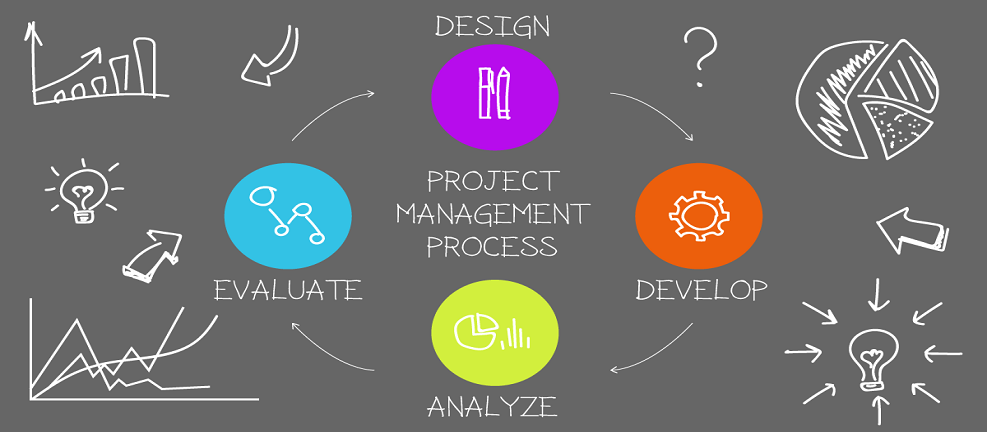In the IT world, projects are the most vital parts among techies. When they are engaged in a project, they are absolutely fine, irrespective of the nature of the projects. The work pressure and other related issues are the other part of the story. But, at least they are quite reluctant about the fact they are part of a project. However, the longevity of a project depends on the type of project mainly and can last for some months or even some years. Depending on the complexity or simplicity of the project, one can estimate the duration of the project. Although a project can be simple or complex, yet every project has a degree of complexity. The complexity of a project can be related to a degree of technical difficulty, a degree of uncertainty and size of the project.
Is that a difficult IT project is always complex?
No, a complex project and a difficult project are different and it is very vital to know the difference. The factors like performance or the cost of the project can make it difficult. However, a complex project is the one that has ambiguity or uncertainty or that is surrounded by unpredictability. A complex project also includes several moving parts, project timeline, budget, the involvement of several teams and stakeholders. Once the project is identified as complex or difficult, then necessary steps can be taken to break the complex project into simple tasks.
How to manage a complex project?
Whether a simple or complex project involved, the task of the project manager is vital. A project manager should have the insight to deal with every project by applying suitable techniques. The traditional project management systems used involves continual efforts where the techniques used are common, the scopes are known and the results are predictable. That means one cannot expect a better result using this technique. With the introduction of the modern project management systems, both a simple and complex project can be expected to results that are more than expected. Here, new and unique techniques are used, highly specialized resources, and more flexible processes. The planning, leading, organizing and controlling are the four parts included in project management to arrive at a result.
A complex IT project can be made manageable by breaking it into simple tasks. However, breaking the project into such small tasks should be done with care. The smaller tasks should be such that can be finished within 8-80 hours of manual labour. Otherwise, the task is going to overburden and the control over it is lost.
Every IT project involves several areas to look after. Not everyone is equipped with all types of skills. Each domain has its own significant contributor, who has expertise on that very specific skill. While working on the project, it is the duty of the project manager to segregate the tasks among the skilled professionals to remove any kind of ambiguity. The project plan must include how the project is going to be cut into small tasks or what should be the size of each small task. The planning, leading, organizing and controlling are the most basic parts of a project in a PLOC model of project management, irrespective of whether it should be treated in a traditional approach or in a modern approach.
Breaking the project into smaller sections seems to be very easy, but is not. So, specific strategies are required for that. In breaking a big project into smaller crumbs requires some conceptualize and result-oriented strategies, otherwise the entire thing can be ruined. The WBS or Work Breakdown Structure and the PBS or Product Breakdown Structure are required in this process of breaking projects into simple tasks. Now, the question is which concept to be applied? For that, you need to understand the basis of each of the concepts. WBS or Work Breakdown Structure: The WBS is a deliverable-oriented breakdown of a project that helps in organizing the work of the team into manageable sections. The deliverable element can be a service, product, data or their combinations and provides the necessary framework for detailed cost estimation as well as control. This also offers guidance for schedule development and control.
While designing the WBS, the points to be considered are:
- Identification of the most important output of the project.
- Identification of the activities that can be developed in parallel and break down them.
- Working with the entire project team.
- Choose the WBS model that fits your team and the organization.
- The work packages of the WBS should define the total time and cost, cannot be broken down further, and its implementation can be monitored from start to finish.
PBS or Product Breakdown Structure: This is a tool in project management that is used for analyzing, documenting and communicating the result or outcome of a project. This also forms part of the product based planning technique.
In the case of designing PBS, the guidelines should be:
- The topmost level is the final product.
- The sub-deliverables comprises of sub-components of the final product.
- Identification of product components through collaboration in the group.
- Product description can be a useful component of PBS.
Whether WBS or PBS?
Although both the tools are used for breaking down a project into simple tasks that can be manageable by the team and the outcome is satisfactory, they have differences. Now, if the tools have to be sued, which one should be used or when should be used is a question that comes naturally. However, according to the experts of project management, the PBS should be developed at the first stage to clear the project outcome. Then the WBS can be built in order to simplify the resource and team planning as well as realistic project plan construction.
The steps to be followed for breaking the giant projects:
- Think about the giant projects from two different angles. One angle is the inside view and the other one outside view. In the inside view, take a close look from the subjective standpoint and estimate the effort that is required for implementing each piece. Then think about how the small pieces can be combined together to reach the giant goal. In the outside view look from the objective standpoint and examples of other such projects. Ask others how they succeeded in similar problems and estimate the effort required in solving the problems from the feedback of others for similar cases.
- Break the giant goal into smaller tasks or pieces: You have to cut the giant project into smaller pieces. While breaking them into smaller tasks, make sure that none of them loses its significance and should be meaningful components of the bigger one.
- Focus on one small piece at a time and complete it: While working on the smaller pieces or crumbs, concentrate on each piece at a time. This will bring you the best results in a bigger area.
- After completion of each small task, praise and reward yourself and the team involved in the completion of the same. This will encourage you and your team in taking up the next crumb with more enthusiasm.
Closing thoughts: Thus, a complex project in IT can be broken into simpler segments that ensure satisfactory result and delivery of the project using the WBS and PBS tools in project management. However, choosing the right project manager is the first step in ensuring the project to be completed with satisfaction.
N.B.: AIDOOS provides a platform where you can come with your complex projects and let it done satisfactorily by expert professionals.




